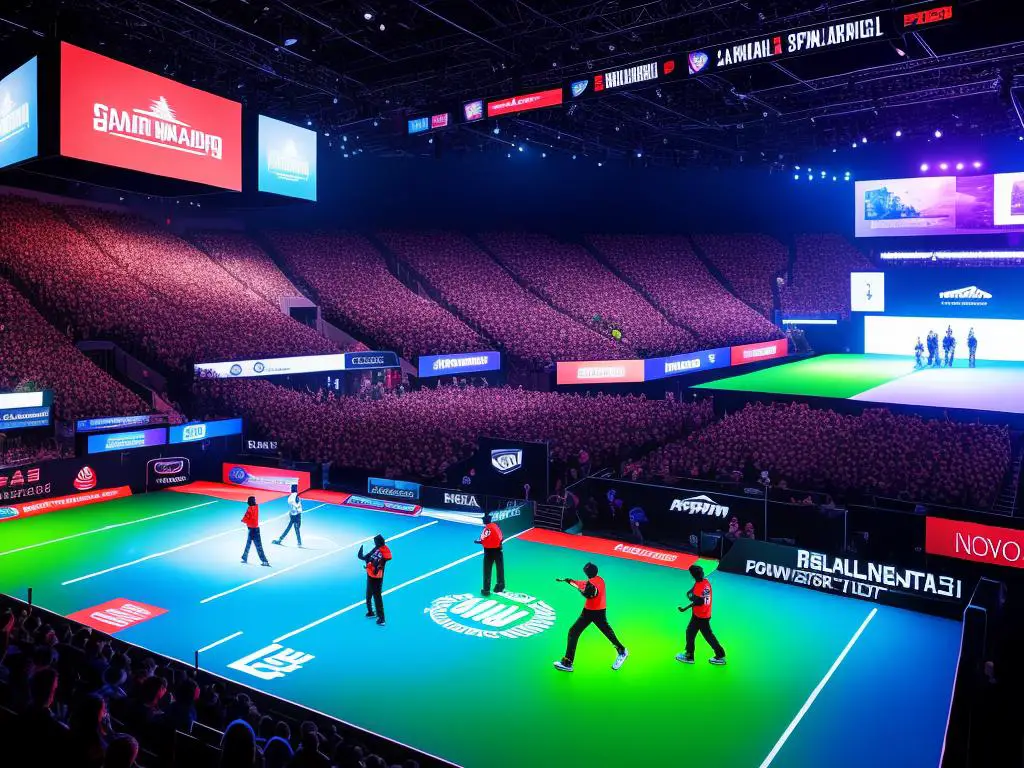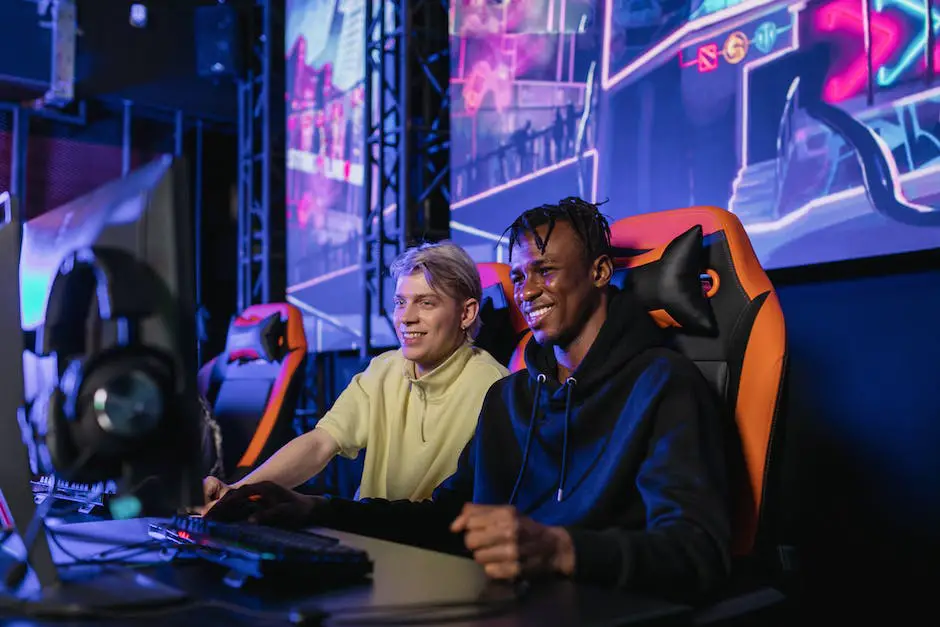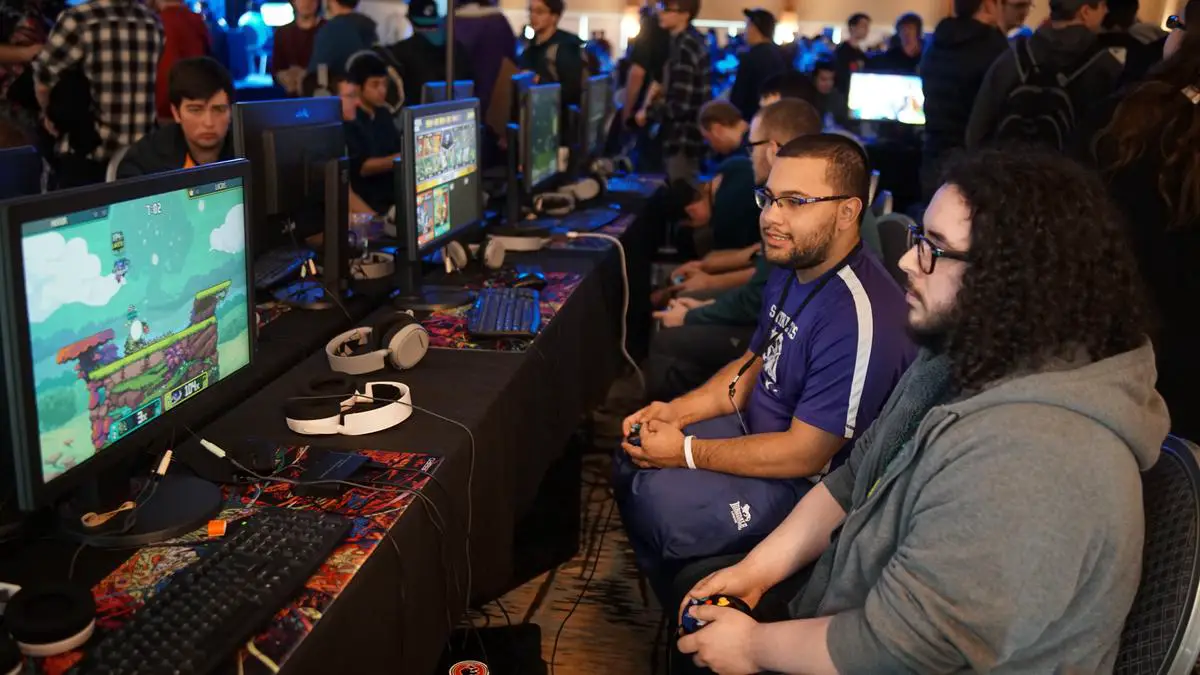The e-sports landscape is a dynamic and rapidly evolving one, buzzing with an infectious energy that is palpable to anyone who dares to dip a toe in its expansive waters. This vast virtual realm, resplendent with its myriad games and tournaments, has carved its niche in the world – increasingly captivating the public, winning hearts of the young and old, while progressively transcending cultural and geographical barriers. E-sports, a phenomenon once considered a frivolous pastime, has evolved into a lucrative industry with professional athletes, massive fan bases, and staggering prize pools. Pivotal to its riveting gameplay and its consequent popularity, are the skills and strategies employed, asserting an allure no less intriguing than that of traditional physical sports. With its abundance of avenues and layers, the complex game theory in esports demands an astute strategic mind and a set of refined skills – both requiring vigorous training and a nuanced understanding of the discipline which this essay strives to impart.
Understanding E-Sports Landscape
The E-Sports Revolution
In the bright, digital realm of e-sports, every day can feel like a Saturday. The atmosphere buzzes with the energy of millions of players worldwide. Depending on the day, that energy is either drenched in the lights of big tournament stages or vibrating in the comfort of many home settings. Behind every screen, from the most humble gamer’s room to the most prestigious esports arenas, a player hones his strategy, aiming for mastery in their choice of game.
The Rising Popularity of E-Sports
The appeal of e-sports is universal. It transcends geographical boundaries, bridging grown-ups and kids, casual players and serious competitors. If the traditional sports world is a map of physical prowess and real-time strategy, the esports landscape is an infinite universe of mental agility and complex mechanics.
Much like how a football fan would watch a World Cup match, spectators of e-sports engage with streaming platforms to follow their favorite players and teams. They cheer for dazzling display of skills, intricate in-game strategies, and heart-stopping moments that are a hallmark of esports competitions.
Types of E-Sports Games and Their Competitive Strategies
Esports boasts an expansive portfolio of games, each with their unique play styles and strategies. Some big titles include League of Legends (LoL), Counter-Strike: Global Offensive (CS: GO), Dota 2, and Overwatch.
In LoL, a team-oriented multiplayer online battle arena (MOBA) game, strategic positioning and team coordination play significant roles in the game’s outcome. On the other hand, CS: GO, a first-person shooter game, emphasizes individual skills and reaction times.
In addition to the genre and game mechanics, competitive strategies in esports also significantly depend on the format of the tournament. While some tournaments, like The International for Dota 2, take place annually and feature carefully picked teams, others, such as the LoL World Championship, occur seasonally and involve teams who’ve fought their way up through rigorous regional circuits.
Unlocking Strategy in E-Sports
Involvement in esports, particularly at a competitive level, requires more than just understanding a game’s mechanics and controls. Just like in chess, where each move contributes to an overarching game plan, players in esports must understand the strategic depth of their chosen games.
A quality that sets apart great players from good ones is their ability to read the game’s rhythm and adapt their strategies in real time. The decision to be aggressive or defensive, commit resources to a certainly risky strategy, or adapt to changes in game dynamics all contribute to proficient-level gameplay.
understanding the World of E-Sports
An intricate understanding of the esports world is not only about being well-versed with the related games or knowing all the players. It also involves comprehending the complex series of strategies that form the crux of this constantly evolving universe. Whether you’re interested in being a player, a spectator, an investor, or just a general enthusiast, esports provides an engaging fusion of competition, live sporting excitement, and entertainment.

The Role of Skill and Strategy in E-Sports
The Game of Strategies in E-Sports
In the exhilarating digital arena of e-sports where players contend against one another, it’s easy to mistakenly believe that the victor is just the one with the quickest reflexes or the most agile fingers manipulating their avatars. But, paralleling the tranquil chess matches organized in quiet parks or within club premises, or even the high-stakes poker face-offs under Vegas’s shining neon, e-sports is more layered. It’s a vast ocean of intricate strategies and astute skills eagerly awaiting curious explorers.
The Significance of Skill in E-Sports
In the vibrant universe of E-Sports, skill isn’t just commendable – it’s indispensable. Picture a serene hummingbird as it flutters with a breathtaking elegance, brushing past flowers in a vibrant dance to draw sustenance. It isn’t just about speed, but a precise calculation of movement and resources.
The Salient Strategy in E-Sports
In this lavish spectrum of skill, strategy is the golden thread that weaves together the tapestry of success. It’s the mind behind the moves, the scheme inside the network of neurons and synapses. Like the hardened war general overlooking a massive battle board, each tree representing a battalion, each contour of the terrain a strategic advantage or disadvantage, E-Sports gamers deploy depth of strategy that helps them stay ahead.
The Ethereal E-Sports Mind
Amidst this innovative digital battlefield, it’s the prowess of the human mind that takes the center stage. Much like traditional physical sports, it requires an extensive amount of training, practice, and dedication, but interestingly, it includes a cerebral twist. They have to think on their feet, literally and figuratively.
When it comes to E-Sports, the thrill and adrenaline lies not in physical sprints, but in virtual ones where strategy and quick-thinking decisions reign. It bridges the gap between screen and reality, evolving from a mere game to a testament of cognitive human capabilities. In e-sports, each mouse-click or a controller’s press catalyzes the clash of cerebral titans.

Popular Competitive Strategies in E-Sports
A Unifying Thread
There’s a certain prominence in the e-sports world where numerous players gather in digital arenas, contributing their unique abilities to their team’s success. This rings true from League of Legends, a key player in the MOBA genre, to the battle royale heavyweight, Fortnite. In these gaming landscapes, the fabric of success is woven through team coordination.
Digital competitions often comprise of teams with designated roles, working harmoniously to secure victory. In League of Legends, a five-player setup requires each member to select a unique champion equipped with specific abilities contributing to their path to success. Similarly, Fortnite banks on the combined individual strengths of players striving for survival against other teams.
With every click and keystroke, the intricate network of collaboration paints a beautiful tapestry of strategy and coordination. In essence, watching an e-sports match equates to witnessing a meticulously executed performance. It’s a grand dance, where every movement holds untold significance.
The Orchestra of Coordination
Much like an orchestra, where several musicians produce a symphony through coordinated proficiency, e-sports teams rely heavily on coordination. In League of Legends, it might be the well-timed assistance of a mid-laner ‘ganking’ another lane, or perhaps a perfectly coordinated attack on Fortnite where one player draws the opponent’s attention while another secures the elimination.
Coordination is often the result of countless hours of practice, perfecting strategies, familiarizing oneself with the other team members’ tendencies, and predicting opponents’ maneuvers based on past actions.
Mastery through Technical Proficiency
Technical proficiency in e-sports goes beyond merely understanding how a game functions. It’s about pushing the boundaries of the game mechanics, squeezing out every possible advantage that a split-second decision or a more accurate aim can confer.
For instance, League of Legends players strive to understand the capabilities and intricacies of their chosen champions, predicting skill shots’ trajectory and cast time, and exploiting the fog of war to their advantage. Fortnite competitors, on the other hand, have mastered building mechanics to create fortresses or complex structures within seconds for sanctuary or gaining a height advantage during combat, coupled with impeccable aim and quick reflexes.
The Chessboard of In-Game Tactics
E-sports, like traditional sports, heavily rely on tactics. They can be as simple as team compositions, where in games like League of Legends, teams can opt for a ‘poke’ composition that seeks to whittle down enemies from afar. Alternatively, teams could go for a ‘pick’ comp, using crowd control abilities to single out and eliminate opponents.
In Fortnite, one common tactic is the ‘high ground’ strategy, where players build upwards during a fight, gaining a significant advantage by having a better field of view and shooting angle. Or perhaps a team might opt for an ambush strategy, waiting in stealth until an opportune moment to strike unsuspecting opponents.
From this we see that much like a chessboard, e-sports games are layered with many strategic decisions and tactics — choices that can turn the tide of battle in the blink of an eye.
The Dynamics of E-Sports Competitions
In the realm of e-sports, victory often hangs delicately in the balance, hinging largely on each team’s strategic approach, technical expertise, and tactical maneuvers. A meticulously coordinated attack or a deftly executed play could instantly alter the course of a match, turning a seeming loss into a triumphant win.
This intricate interplay between strategy and skill forms the lifeblood of e-sports competitions, painting the image of a battlefield where each player embodies both a vital cog and a master tactician. E-sports thus transcend the confines of mere games, emerging as a forum for showcasing unrivaled strategic acumen, technical precision, and tactical ingenuity.

Creation of an Effective Training Regimen
The Heart of the Grind: A Glimpse from Within
On any given Thursday afternoon, as a hint of autumn chill permeates the air and streets are awash with hues of amber and gold, a less conspicuous spectacle unfolds within the confines of a nondescript room. Amid the soft hum of computers, the rhythmic clatter of keyboards, and the glow of gaming monitors, the pulse of the e-sports world beats steadily.
The Esports Training Perspective
Esports, initially seen only as leisure, had evolved into a competitive sphere where Alex and many like him were players, strategizers, and athletes. Learning the game was no longer sufficient. Improving skills was a daily grind, necessitating hours of dedicated play—a routine made rich with nuanced strategies, critical skill acquisition, and understanding opponents’ gameplay.
Laying the Tracks: The Training Regimen
Alex’s daily training began after the world had its breakfast, the sun still comfortably spreading its warmth over the city. His sessions led him into the gamut of strategic gameplay, evaluating rivals, refining his personal style of play, and crucially, manning specific characters or roles within the game.
His game time wasn’t just the rote repetition of game mechanics, but an intricate dance—working on the minutiae, analyzing prior losses, and strategizing for future battles. Mastery over complex in-game systems was as necessary for Alex as the blood pumping through his veins.
Adding to the Mix: Physical and Mental Health
But the routine highlighted the importance of balance, pivoting focus towards physical fitness and mental health. The tedious hours spent in front of a computer monitor necessitated fitness regimens as crucial as mastering strategy. Alex exercised daily, strengthening his body, combating the physical downsides of prolonged gaming such as posture imbalances, muscle stiffness, or wrist aches.
Mental health was no less significant. Meditations were a cherished part of his day, maintaining a clear mind, mitigating stress, and fighting off burnout. The freedom from mental clutter would amplify strategic thinking, a pillar that esports thrived on.
Adapting Strategies
Training wasn’t merely a checklist of tasks but an evolving plan adaptable to individual and team evolution. Alex thrived on communication with his team, understanding the dynamics of their collective gameplay, and refining strategies accordingly.
A Whole New Ball Game
It was this regimented approach that marked Alex much more than a casual gamer. While the gaming mouse he held or the monitor he stared at might be common, his endeavor was neither ordinary nor easy.
As the city succumbs to twilight, the hustle of the day lessens. Lessons have been absorbed, strategies honed, and slowly, Alex chips away at the formidable world of professional gaming. A cycle of training, adapting, improving, and repeating is the undercurrent that drives him, a mantra that extends beyond the confines of the game. A testament to raw discipline in the pulsating ebb and flow of the esports realm.

The Role of Artificial Intelligence in E-Sports Strategy
The Emergence of a New Player: Artificial Intelligence
Watching esports evolve has always been captivating. From its humble origins as breezy, recreational games, it has morphed into a fierce, billion-dollar behemoth. Technology is now key, especially with the advent of artificial intelligence (AI). It has begun to remodel esports strategies and chart a novel path for its future.
Understanding the Court: AI and E-Sports
AI’s duty in e-sports can be likened to a coach in traditional sports. The AI analyses matches, identifies patterns and trends, and informs on a player’s weak and strong points. But unlike a traditional sports coach, an AI’s report is completely impartial and backed by hard data.
This is possible because AI operates on machine learning – algorithms that allow it to learn from and make decisions based on data. Once a match takes place, AI software can dissect the game into millions of data points, analyze them, and provide insights that humans may overlook.
AI also excels in developing potential strategies. By understanding each player’s strengths, weaknesses, and tendencies, it can suggest specific moves to counter opponents or achieve victory in the quickest, most efficient manner.
The Ghost in the Machine: Predictive AI
AI isn’t just for post-game analysis; it’s also useful during a live game. With predictive AI, it can calculate the possible outcomes of a current game based on the information available at a given moment. Imagine having an esports strategy consultant whispering in your ear, guiding your actions and reactions based on pure mathematics and probability. This edge can mean the difference between victory and defeat.
The Players’ New Companion: Performance Tracking
As esports professionals continue to push the boundaries of their abilities, performance tracking becomes even more valuable. With AI’s help, players can see systemic reports of their gaming performance, from their accuracy to decision-making speed, giving them an objective view of their progress.
The Future Game Plan: AI’s Possibilities in E-Sports
The application and influence of AI in esports strategy does not stop with data analysis and predictive modeling. As AI continues to evolve, so will its roles in esports. Future possibilities are numerous: real-time coaching, deep exploration of game metas and mechanics, and even the creation of AI opponents for practice sessions.
The AI’s depth of understanding, coupled with its ability to learn and adapt, paves the way for a future where artificial intelligence shapes the metagame, effectively changing the strategies at the highest levels of esports.
One promising avenue is AI’s potential to develop training modules. Picture an AI system that can simulate an opponent’s gaming style – this could allow players to prepare against specific opponents, adding a new and exciting dimension to esports competition.
AI’s role in esports strategy is evidence of how technology can not only enhance human abilities but also potentially redefine competitive landscapes. With its rising applications, AI proves to be an exciting and transformative force within esports.

The future of e-sports, dazzling with strategic potential, also points towards an enhanced utilization of artificial intelligence. AI’s role in formulating strategies, deciphering complex game patterns, tracking player performance, and even predicting future trends presents possibilities that are as exhilarating as they are unprecedented. With advancements in technology, the fusion of human ingenuity and artificial intelligence promises to scale new heights, revolutionize gameplay and change the face of e-sports strategy in ways yet to be fully understood or even imagined. So, let us all continue to revel in the glorious uncertainty of this ever-changing landscape, cautiously optimistic about the extraordinary future it promises. The strategic depth and dynamism within e-sports have the power to bewitch even the uninitiated, promising not just an adrenaline-charged rollercoaster of unadulterated fun, but also a fascinating exploration into the marvels of the human mind, the dexterity of its strategies, and the invincible spirit that rides it all.